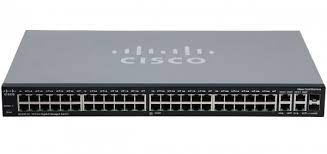TYPES OF NETWORK DEVICES
TYPES OF NETWORK DEVICES
A network device is a piece of hardware or software integral to communication between a computer and an internet network. Network devices play two roles. The first is establishing a network connection, as a router or a modem does. The second one is maintaining, protecting and enhancing that connection, as with a hub, repeater, switch or gateway.
1. Switches - A switch is a multiport device that improves network efficiency. Switches maintain limited routing information about nodes in the internal network, allowing connections to systems like hubs or routers. Strands of LANs are usually connected using switches. Generally, switches read the hardware addresses of incoming packets to transmit them to the appropriate destination.
2. Bridges - Bridges connect two or more hosts or network segments by storing or hosting frames between them. Bridges use hardware MAC addresses for transferring frames. They can forward or block data with the MAC address of the devices connected to each segment. They can also connect two physical LANs into a larger logical LAN.
3. Routers - The main job of a router is to direct traffic. Routers transfer packets to their destinations by charting a path through interconnected networking devices using different network topologies. Routers are intelligent devices that store information about their connected networks. Most routers also operate as packet-filtering firewalls and use access control lists (ACLs).
4. Firewalls - A firewall restricts th internet traffic of a private network, controlling what goes in and out. They analyze and restrict data packets based on programmed parameters, either whitelists or blacklists. Whitelists only allow information that falls within a certain set of parameters, while blacklists deny all information that falls inside the parameters.
6. Modems - A modem (modulator-demodulator) converts digital signals into analog signals of different frequencies and transmits them to a modem at the receiving location. The receiving modem performs the reverse transformation and provides a digital output to a device connected to a modem, usually a computer. The digital data is usually transferred to or from the modem over a serial line through an industry-standard interface, RS-232.
7. Network interface cards (NICs) - A network interface card is an internal hardware chip that connects a device to the internet. At the TCP/IP layer, the NIC connects a device to a network. At the physical layer, the NIC transmits a signal that sends information to the network layer. Then all data passes through the NIC to the server and back to the device.








Comments
Post a Comment